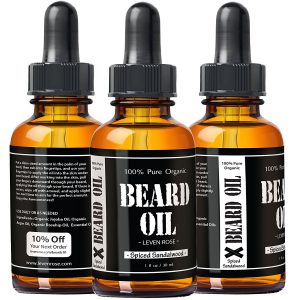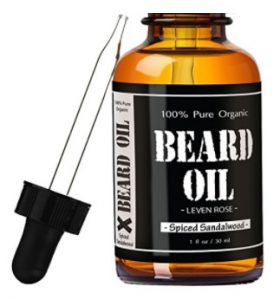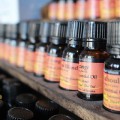 Do you want to look manly? Grow a beard. Want to smell manly? What you need is a manly-smelling beard oil that you can slather onto your face so that you can use its intoxicating musk to attract women from miles away.
Do you want to look manly? Grow a beard. Want to smell manly? What you need is a manly-smelling beard oil that you can slather onto your face so that you can use its intoxicating musk to attract women from miles away.
Sure, you can reach for a commercial cologne to achieve a somewhat similar olfactory effect, but why not moisturize your beard and make yourself smell irresistible at the same time? Even better, why not ditch the commercial oils altogether and make a DIY beard oil for yourself?
Nothing is manlier than making your own beard oil like some kind of 15th-century alchemist hovering over a pot of secret ingredients. With a long, flowing beard, you already have a wizard-like persona, so you may as well seal the deal. Here are some homemade beard oil recipes that you can use to make some beard magic happen:
First, the Basics
But wait, before you start putting together some beard oil, you need to learn the basics of this simple art. A lot of guys start off with commercial beard oil before they attempt to make their own, and if you don’t want to mess around buying multiple bottles of different essential oils, then this may not be a bad idea for you. Of course, a lot of the ingredients in these commercial oils are cheaper to buy separately.
If you’re ready to make your own, though, keep a few things in mind:
- First, you will need a carrier oil. This is the oil that will carry everything else, and it will make up the majority of your blend. They are not always mentioned in the recipes below because it is assumed that you will pick one that best agrees with your skin in most cases, such as coconut oil or avocado oil. Whatever you do, do not just add essential oils to your face without diluting them with a carrier oil, as this could cause a lot of irritation. People may not be able to see your inflamed hives under your beard, but it really won’t be pleasant for you.
- Be sure to buy your oil from a reputable source so that you know what you’re getting. Screen for any allergies or other things of that nature.
- Get an oil vial or bottle that you can put your mixture in and be sure to sterilize it before you add the oil. This will help it last longer.
Before You Get Started
You’re going to need a few basic things before you can start making your own beard oils at home.
Storing Your Oils
Properly storing your beard oil is important in preserving it for as long as possible. For best results, it is recommended to use an amber glass bottle with a glass dropper for extraction. Luckily, these are very inexpensive and quite easy to find. I get mine from Amazon.com for about $1 per bottle.
Transferring Your Oils
I also like to use a funnel for pouring my finished oil into the bottle. Trust me, it’s very frustrating when you’ve prepared a great beard oil, but you spill it all over the counter as you’re trying to get it into it’s bottle. You can get 6 of these for only $2 and you’ll be really glad you got them.
Getting Your Ingredients
Most important of all when making beard oil are the ingredients that you use. Amazon.com has by far the most extensive selection of carrier and essential oils. In fact, you might find the vast array of different brands a little overwhelming. But the great thing about Amazon is that you can read real customer reviews for every item. When in doubt, look for the best sellers (they’re usually popular for a reason) and read through the reviews to make sure that previous customers have been satisfied with that product.
Now, the Recipes
Smell Like a Plank of Wood Beard Oil Recipe
There’s few things manlier than wood, and that’s not just because of the subconscious Freudian connotations that the word recalls. The smell of wood brings all sorts of great mental imagery to the brain. It makes you think of acres of tall, imposing trees being hacked away by hairy lumberjacks, or of expert carpenters cutting and molding wood into usable shapes. If you want a classic smell like this, perhaps this recipe is for you.
Most of the scent is going to be from cedarwood oil, and it’s bound to make you smell like you just walked out of the woods. This will make a little over one ounce total.
- 3 drops of tea tree oil
- 8 drops of cedarwood oil
- 1 drop of lavender essential oil
- 1 ounce of your carrier oil
Put all of your essential oils together with your carrier oil in an empty vial and shake them well. This is a particularly good recipe during the winter months, since it will remind people of the outdoors as it wafts around, and will make them look forward to summertime all the more. Give them an early taste of freedom with your beard.
Smell Like a Blend of Nuts Beard Oil Recipe
Another scent that is sure to recall the outdoors, this is a recipe for those of us who like our trees before they’re even born. For this recipe, we’ll suggest using almond oil as the base, since it certainly plays into the blend very well. If it’s not already clear, avoid this if you have any kind of nut allergy. Even if you’re not sure, play it safe and try another recipe.
- 10 drops of cypress essential oil
- 2 drops of tea tree oil
- 4 drops of sandalwood oil
- 1 ounce of almond oil
As before, put them all together and give them a shake. If you’re not into almond oil, you can always just replace it with any of the other myriad of carrier oils, but keep in mind that this will change the smell to an extent of course.
A Little Bit of Woods Beard Oil Recipe
If you’re looking for a beard oil with good moisturizing effects that is not too offensive or noticeable in terms of smell, you might want to go with this recipe. It combines a few more subtle essential oils and has a vague wood and citrus scent.
- 6 drops of lime oil
- 4 drops of sandalwood oil
- 2 drops of vetiver oil
- 1 ounce of your carrier oil
As a carrier oil for the base, grapeseed is recommended here, but it’s not necessarily required. You might want to experiment a bit and see what smells best to you. Argon oil or almond oil also works pretty well. The key with this recipe is to just keep everything very diluted so that the smell doesn’t become too overwhelmingly strong.
Try Beard Oil Before You Make It If you’re looking up beard oil recipes, you’re probably looking at spending over $50 in ingredients (at least). If you haven’t tried beard oil before, a much lower cost option than making your own is buying from one of the many beard oil makers out there. Leven Rose’s Spiced Sandalwood Beard Oil
What Does It Smell Like?
|
Hopefully, you’ve found these three recipes useful and you’ll be able to put them together fairly easily, since they are so simple. Making your own DIY beard oil can be a lot more fun than buying your own, but one of the challenges of making your own beard oil is getting familiar with the realm of essential oils, which is kind of a booming business right now with a lot of both high-quality and poor-quality products available.
Make sure to do your research when you’re scrolling through the products on Amazon.com and pick a brand that lists all of its ingredients, is ideally organic, and doesn’t make any weird claims on the sales page. Also, make sure to think carefully about what carrier oil you would like to use, since this can sometimes affect the texture of your beard.
If you want to read more articles like this one where you can find amazing DIY beard oil recipes, click here!
Good luck!







3 Responses
Polycap
Much appreciated. Simple and seemingly easy to follow recipes.This article is particularly helpful to guys who for one reason or the other, may not prefer the commercial beard oils.
Robert
You have great content on your site. Viewers should be careful in using citrus essential oils (excluding orange) as they are phototoxic (when exposed to sunlight they will assist in causing sunburn). Bergamot essential oil should only be used if it is “bergapten-free”. When exposed to sunlight, non-bergapten-free bergamot is proven to cause skin cancer. Finally, viewers should be cautious about using cinnamon or cassia cinnamon essential oils, as these can burn the skin. Best to keep those at 0.05% of the total formulation. Cheers!
Jason
Hi, thanks for the great tips! I will create some annotations in recipes containing these ingredients. Cheers!